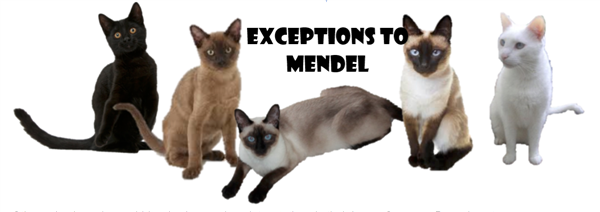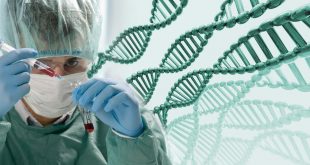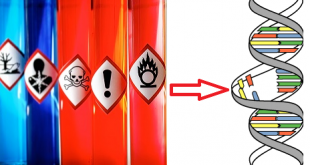In this article we will discuss the exceptions of 2nd Law. 2nd law is divided into (i) single recessive epistasis (9:3:4), (ii) Duplicate recessive epistasis (9:7), (iii) Single dominant epistasis-cumulative effect of duplicate genes (9:6:1), (iv) Duplicate gene- one incomplete dominance (12:3:1), (v) Pleiotropism.
To discuss about the topics we first have to know about
Epistasis
- Recessive epistasis: when the recessive allele of one gene masks the effects of either allele of the second gene.
- Dominant epistasis: when the dominant allele of one gene masks the effects of either allele of the second gene.
Best safe and secure cloud storage with password protection
Get Envato Elements, Prime Video, Hotstar and Netflix For Free
Best Money Earning Website 100$ Day
#1 Top ranking article submission website
Interaction ????
The interaction of genes may be of following types
1) Two gene pairs affecting same character-9:3:3:1
2)Epistasis, one gene hides effect of other
a) Recessive Epistasis 9:3:4
b) Dominant epistasis12:3:1
3) Complementary genes 9:7 (2 genes responsible for production of
a particular phenotype)
4) Duplicate genes-15:1 (same effect given by either of two genes)
5) Polymeric gene action- 9:6:1
6) Inhibitory gene action- 13:3

Single recessive epistasis (9:3:4)
Recessive alleles at one locus (aa) mask the phenotypic expression of other gene locus (BB, Bb or bb) such epistasis is called recessive epistasis. The alleles of ‘B’ locus express themselves only when epistatic locus ‘A’ has dominant allele like AA or Aa. The phenotypic ratio is 9: 3: 4.
Example:
Complete dominance at both gene pairs, but one gene, when homozygous recessive, is epistatic to the other.
In Mouse coat colour.
Gene pair A: colour dominant over albino.
Gene pair ‘B’ agouti colour dominant over black.
Interaction: homozygous albino is epistatic to aguoti and black.
Recessive Epistasis
Example: Coat colour of Mouse
Coat colour is controlled by Gene A, Allele A is hypostatic
  |
to recessive allele (c) The dominant allele C in absence of A
gives coloured mice When both C and A are present colour is
Agouti( wild type most common ) due to banded hair: Near
skin Grey yellow Black Two other colours are
Albino and solid black.
AACC (agouti) x aacc (albino)
⇓
AaCc (all agouti)
AaCc X AaCc
Genotype Phenotype
⇓
A-C- Agouti 9/16
A-cc Albino 3/16
aaC Black 3/16
aacc Albino 1/16
The c locus is epistatic to the A locus.
9(Agouti) : 3(Black) : 4(Albino)
F2 ratio
Single recessive epistasis (9:3:4)

Duplicate recessive epistasis
If both gene loci have homozygous recessive alleles and both of them produce identical phenotype the F2 ratio 9:3:3:1 would be 9:7. The genotype aaBB, aaBb, AAbb, Aabb and aabb produce same phenotype. Both dominant alleles when are present together only then they can complement each other. This is known as complementary gene.
Examples:
Complete dominance at both gene pairs, but either recessive homozygote is epistatic to the effect of the other gene.
In sweet pea flower colour:
Gene pair ‘A’ – Purple dominant over white.
Gene pair ‘B’ – Colour dominant over colourless (white).
A Cross Producing a 9:7 Ratio

Complementary gene action- interactions arise because the two genes encode proteins that participate in sequence in a biochemical pathway.
Enzyme C and enzyme P cooperate to make a product, therefore they complement one another.

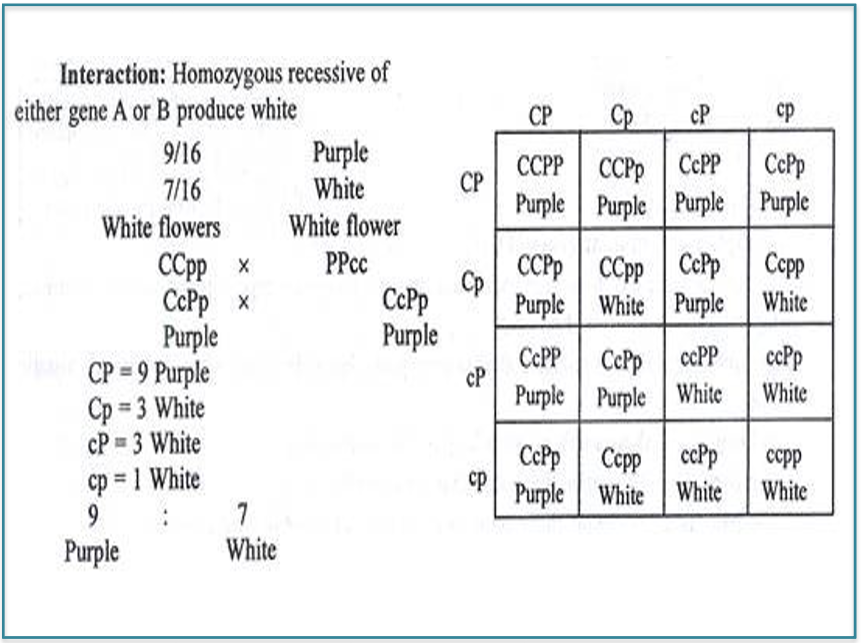
Duplicate genes with cumulative effect (9:6:1)
Certain phenotypic traits depend on the dominant alleles of two gene loci. When dominant is present it will show its phenotype. The ratio will be 9: 6: 1.
Example:
Complete dominance at both gene pairs, interaction between both dominance to give new phenotypes.
Fruit shape in summer squash
Gene pair ‘A’ sphere shape dominant over long.
Gene pair ‘B’ sphere shape dominant overlong.
Duplicate genes with cumulative effect (9:6:1)

Interaction at ‘AB’ when present together, form disc-shaped fruit.
Disc shaped fruits 9/16
Sphere shaped fruits 6/16
Long shaped fruit 1/16
Duplicate genes with cumulative effect (9:6:1)

Duplicate genes–one incomplete dominance
Dominant epistasis (12: 3: 1)
When dominant allele ‘A’ masks the expression of ‘B’, ‘A’ is epistatic gene of ‘B’. A can express itself only in the presence of ‘B’ or b allele. Therefore it is called dominant epistasis. B expresses only when ‘aa’ is present. Therefore, in 9: 3: 3: 1 ratio both 9 and 3 are expressing the ‘A’ gene the ratio is now 12: 3: 1.
Example:
Complete dominance at both gene pairs, but one gene, when dominant, epistatic to the other.
Fruit colour in summer squash:
Gene pair A: White dominant to colour 12/16 white
Gene pair ‘B’ – Yellow dominant to green 3/16 yellow
Green – 1/16 both recessive aabb
Dominant white hides the effect of yellow or green.
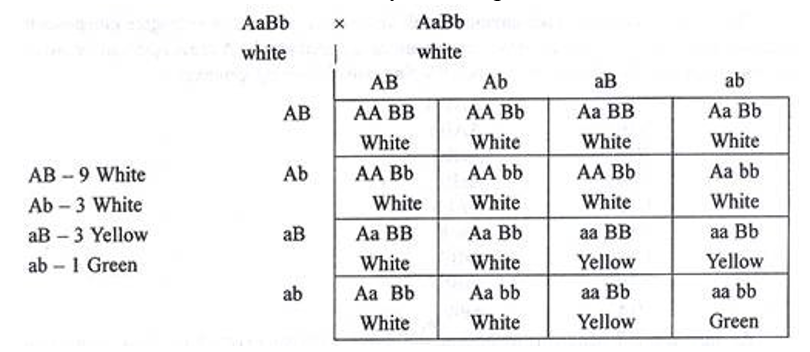
Duplicate dominant genes (15:1)
If a dominant allele of both gene loci produces the same phenotype without cumulative effect, i.e., independently the ratio will be 15:1.
Example:
Complete dominance at both gene pairs, but either gene when dominant, epistatic to the other.
Seed capsule of shepherd’s purse (Caps ell a bursa-pestoris)
Gene pair ‘A’: Triangular shape dominant over ovoid
Gene pair ‘B’: Triangular shape dominant over ovoid (double recessive)
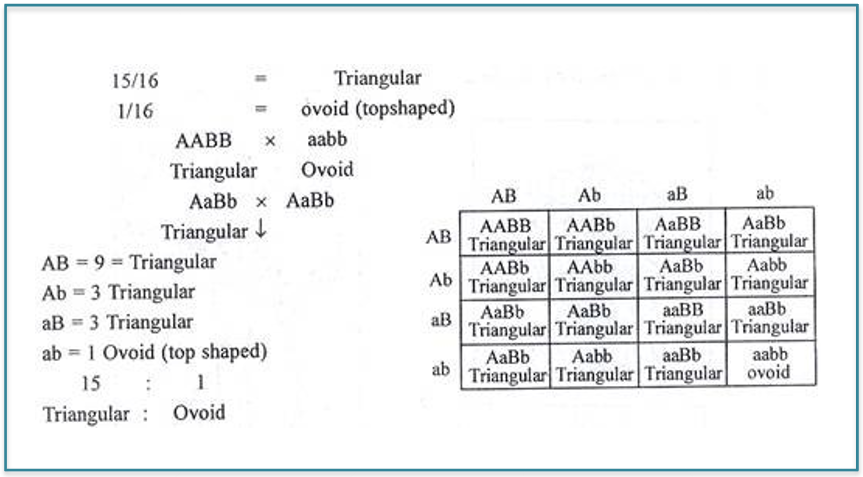
Dominant and recessive interaction (13: 3)
Sometimes the dominant alleles of one gene locus (A) in homozygous and heterogygous (AA, Aa) condition and homozygous recessive alleles bb of another gene locus (B) produce the same phenotype. The F2 ratio will become 13: 3. The genotype AABB, AaBB, AAbb, Aabb and aabb produce one type of phenotype and genotype aaBb, aaBB will produce another type of phenotype.
Example:
Complete dominance at both gene pairs, but one gene when dominant epistatic to the other, and the second gene when homozygous recessive, epistatic to the first.
Feather Colour of Fowl
Gene pair ‘A’: colour inhibition is dominant to colour appearance.
Gene pair ‘B’: colour is dominant to white
Interaction:
Dominant colour inhibition prevents colour even when colour is present, colour gene, when homozygous recessive prevents colour even when dominant inhibitor is absent.
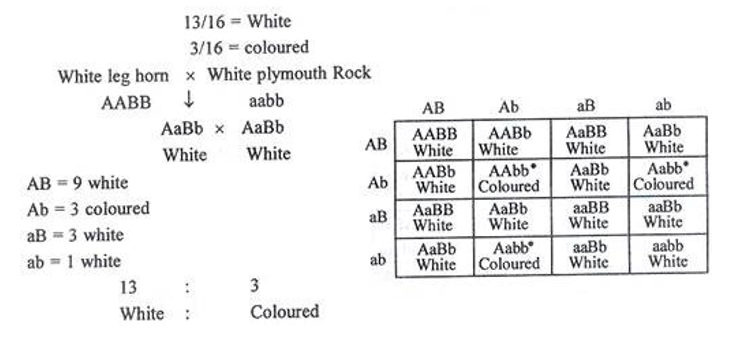
Example
- Interaction involves an inhibitory factor which by itself has no phenotypic effect.
- But, when present in the dominant form prevents or inhibits the expression of another dominant gene.
- eg .Malvidin in primula flowers.
- Malvidin is a O-Methylated anthocyanin responsible for the blue pigments in Primula polyanthus plant.

- Synthesis of malvidin (blue) is controlled by gene K.
- In recessive state(k), malvidin is not synthesized.
- Production is suppressed by gene D, found at completely different locus.
- D allele isidominant to K allele.
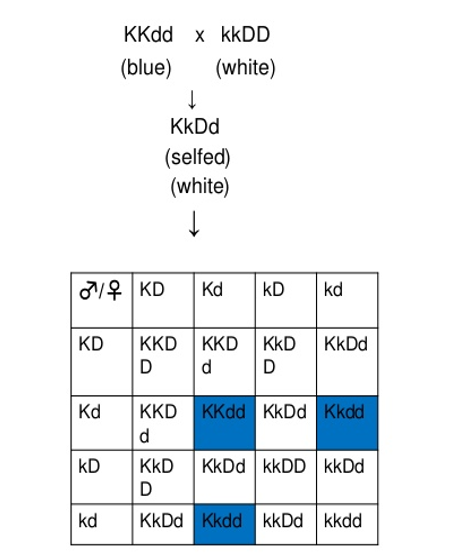
 |
|
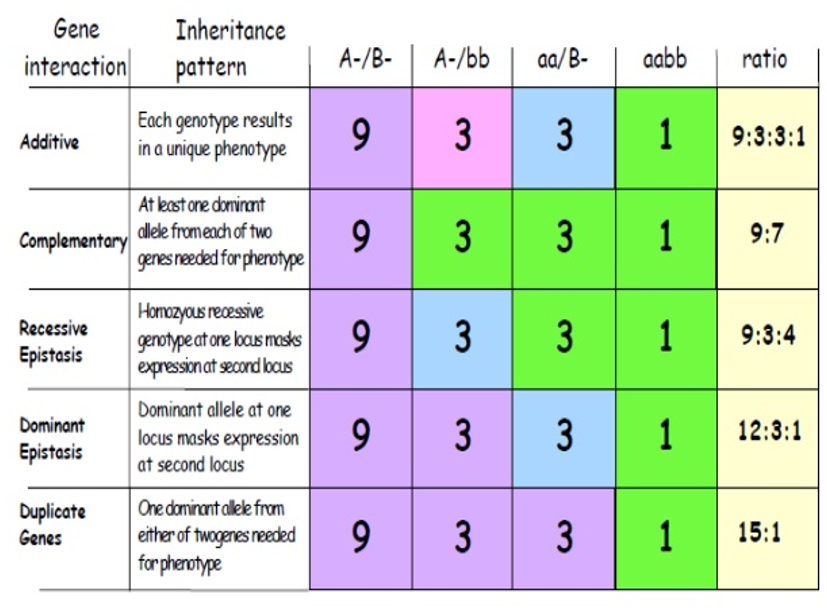
A single gene may affect many phenotypic characters
- Pleiotropy
- One gene influencing many characteristics
- The gene for sickle cell disease
a. Affects the type of hemoglobin produced
b. Affects the shape of red blood cells
c. Causes anemia
d. Causes organ damage
e. Is related to susceptibility to malaria
- SCD is an autosomal recessive condition caused by mutation of the β-globin gene that, in turn, affects the structure and function of haemoglobin, the main oxygen-carrying molecule in red blood cells.
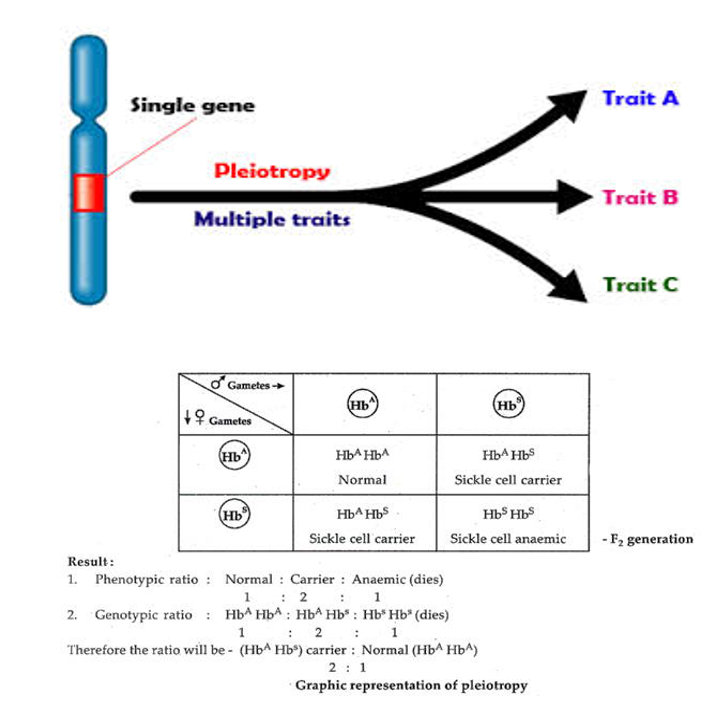

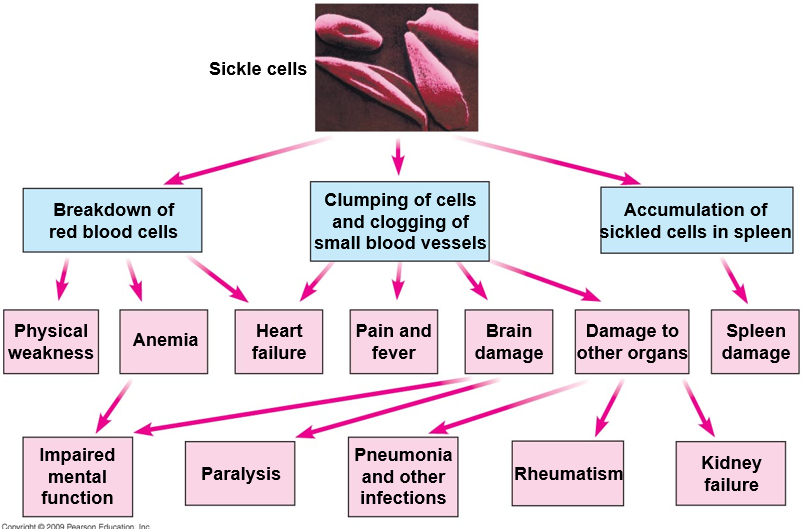
By this we have finished the second topic of 2nd year Fundamental Genetics course.
 Plantlet The Blogging Platform of Department of Botany, University of Dhaka
Plantlet The Blogging Platform of Department of Botany, University of Dhaka
